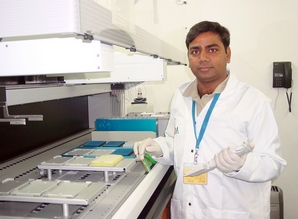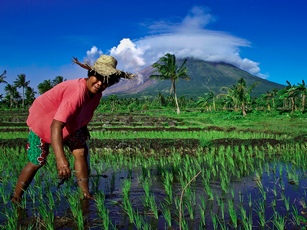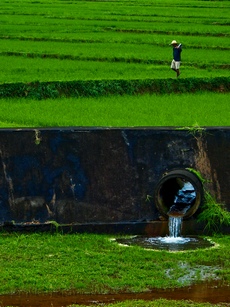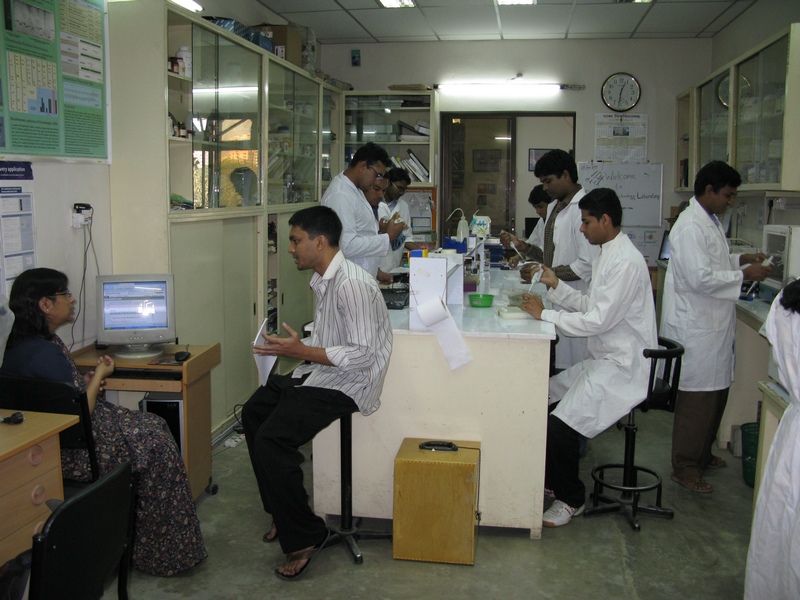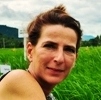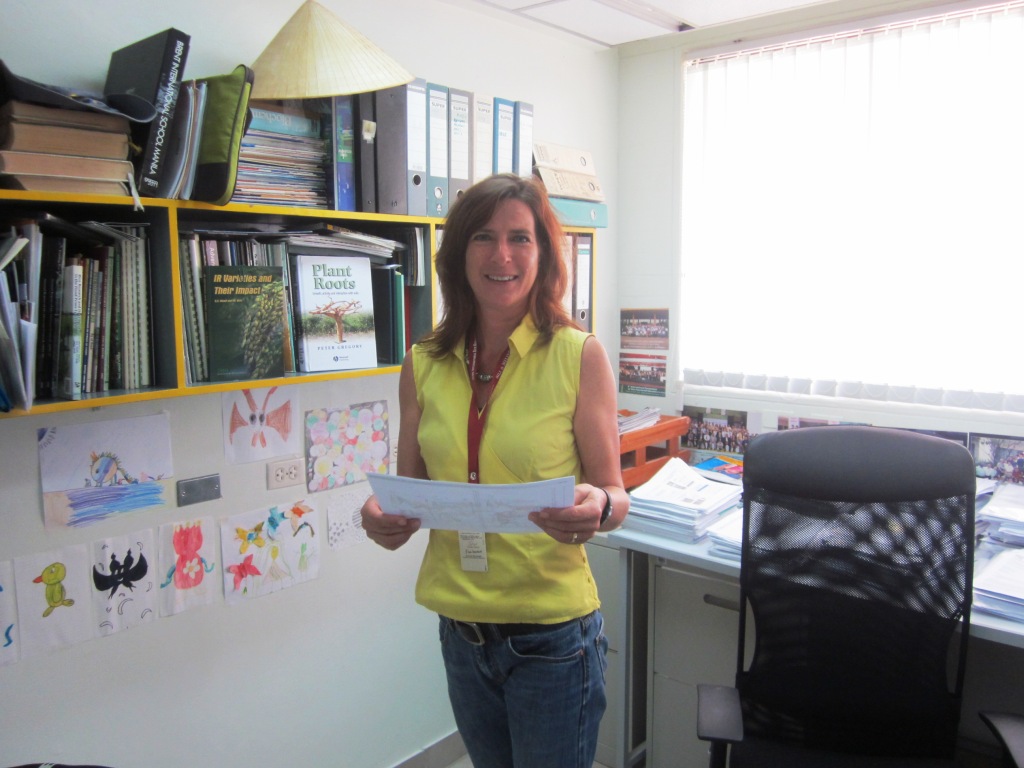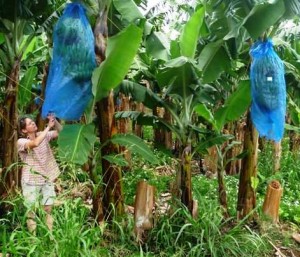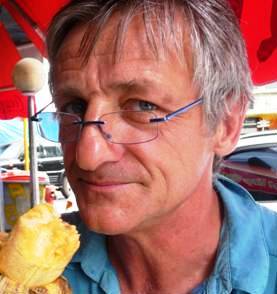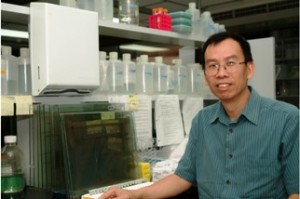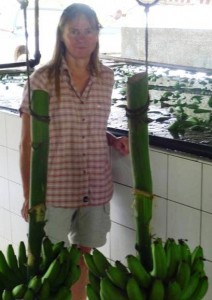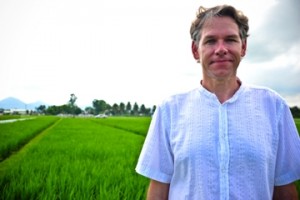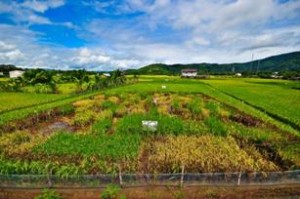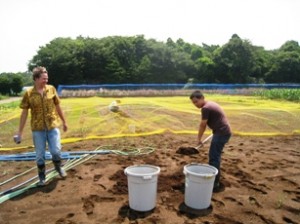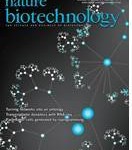 Today, Nature Biotechnology published the first-ever draft genome sequence map for a chickpea variety (PDF). The map will help researchers and breeders the world over to – through molecular breeding methods – deliver to growers higher-yielding more resilient varieties of chickpeas.
Today, Nature Biotechnology published the first-ever draft genome sequence map for a chickpea variety (PDF). The map will help researchers and breeders the world over to – through molecular breeding methods – deliver to growers higher-yielding more resilient varieties of chickpeas.
Now that we have the rewards in a nutshell, and we choose to chew the chestnut of challenges later in the story, let’s next decipher the ‘Rajeevs’ part in the title: introducing Rajeev K Varshney, our very own Leader of Comparative and Applied Genomics, who also led and coordinated the transnational collaboration that developed this map.
We had the pleasure of talking to the gently-spoken Indian, a week before the release of the paper, asking him to recount how the project began, and the challenges and success they faced along the way. We’ll soon get to what Rajeev had to say, but first, a rapid rewind for backgrounding before Rajeev tells us the rest of the story…
… we have the ‘borders’ done… a good idea of what the picture is, and where the rest of the pieces will fit.”
Reality check from the Genomics Gnome of Good News: two is but the twinkling of an eye…
The sequence map of the genotype CDC Frontier – a Canadian kabuli chickpea variety – took about two years to construct.”
No, the time taken is not the challenge since we’re yet to get to that part. In fact, in the world of genomics , two years is fairly fast, compared to, say, the time taken for sequencing other grain genomes such as maize, rice and wheat.
Rajeev attributes this to the interdisciplinary expertise of his team, most of whom are world leaders in their field, and to the enthusiasm and generosity of all partner institutes who funded the collaboration.
And with that background, on to our chat with Rajeev!
Sandwiches in the Sunshine State, and a search starts for the then unattainable holy grail
Q: Is it correct that this project started over sandwiches under a sunny sky in California?
Funnily enough, yes. We had the preliminary discussion during a lunchtime break at the fifth International Congress on Legume Genetics and Genomics back in July 2010. Doug Cook, from the University of California, Davis, and I, organised the meeting for select attendees to discuss the idea.
Many researchers at the time had, or were toying with, sequencing parts of the chickpea genome to discover genes that helped plants tolerate salinity, drought, disease, and so on. The idea of mapping the whole genome, however, was thought to be unachievable given the cost and resources required. What Doug and I proposed to the 10-odd senior researchers that day was that we form an alliance to pool together our knowledge, funds and resources.
When we returned to our home institutes, we all approached our institutes or funding agencies in respective countries, to propose they consider funding the collaborative project. To be honest, this was probably the most challenging task of the project, as it often is with other projects, as they had a hard time recognising the benefits. However, we finally got there, and with the help of more than 20 institutes from North and Central America, Asia, Australia and Europe, we have successfully assembled 74 percent of the genome within two years.
Pieces fall into place for mix-and-match combinations
Now, you may say that 74 percent doesn’t equal the whole genome, but it does provide us with a map and pointers we’d never had before. Imagine doing a jigsaw without a picture to guide you – that’s how hard it was for us at the start. Now at least we have the ‘borders’ done, and we have a good idea of what the picture is, and where the rest of the pieces will fit.
Q:Why is mapping the chickpea genome so important?
Having the genome mapped is going to benefit all chickpea breeders, researchers and growers.
Say a conventional breeder wanted to create a new breed of chickpeas with drought tolerance. They would cross a domesticated, high-yielding variety of chickpeas, with a variety that tolerates dry conditions – most likely, lower-yielding – and then grow the progeny in the field. They wait for these progenies to grow, then visually select the best lines and make crosses with these. They keep doing this process over and over again for six to seven years until they’ve generated a new variety with the desired trait.
Different breed, mould and mode
Molecular breeders do it differently: instead of selecting the lines by visual inspection, they select lines based on their genes. This means they can correctly trace whether the progeny has received the genes which help the plant tolerate drought and only grow, test and cross with these plants, almost halving the time it would take through conventional methods.
With the map, researchers will be able to more rapidly identify genes of interest, and work with breeders to select for plants that display the favourable traits of these genes, whether this be for drought tolerance, pest resistance or for any other trait they are interested in.
Q: Good for researchers and breeders, but how is that going to benefit growers though?
Knowing which plant is more tolerant of drought from the start of the breeding process is going to significantly reduce the time it takes for breeders to develop these types of chickpea cultivars. So, growers will have new breeds of higher-yielding more resilient chickpeas available sooner.
Remember also that chickpeas are a very important crop for smallholders in the resource-poor harsh environments of sub-Saharan Africa, India and Southeast Asia. Not only do they grow it for food and to replenish soil nitrogen, they also export to India, the world’s largest consumer of chickpeas. Most of these farmers would be lucky to harvest one tonne per hectare, so any yield advantage means extra income.
This point is particularly relevant for GCP’s goal, which is to improve the livelihoods of such farmers.
Q: This was one of the largest collaborative projects you’ve coordinated in your relatively short career. What was the most challenging aspect?
Short answer is….many! With it being a collaborative project, bringing together researchers from all around the world, it was always difficult to coordinate suitable times for Skype and phone meetings.
Personally though, my biggest challenge was trying to coordinate so many esteemed researchers. We all had great ideas and we all thought each of our ideas was the right one. I had to resolve all issues amicably and find a solution to move forward.
Luckily I have surrounded myself over the years with some good colleagues to whom I’ve always been able to turn to discuss any problems. Jean-Marcel Ribaut, who is the Director of GCP, was one particular colleague to whom I often turned to for advice, given his experience with coordinating all of GCP’s collaborative interdisciplinary projects. He also helped source much-needed funds and suggested several useful partnerships, which were vital in carrying out the project.
My boss at ICRISAT, William Dar, the Director General, has always been very supportive, and time and again went out of his way to make sure I had the funds, capacity and sanity to keep the project going! I am deeply indebted to him.
The future
Q: How will the research continue?
Researchers and breeders will be able to customise the genome map to fit their particular purposes. Most will be interested in using it to develop molecular markers, which breeders can use to highlight specific genes of interest for molecular breeding. As I mentioned earlier, this could realistically halve the time it takes to breed new varieties from six to10 years to four to five years.
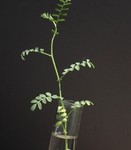 One outcome of the project, which I’m particularly interested in exploring further, relates to chickpea diversity. When we compared the 90 chickpea genomes, we realised that that diversity in the elite varieties was very low, meaning they all had very similar alleles (form of genes).
One outcome of the project, which I’m particularly interested in exploring further, relates to chickpea diversity. When we compared the 90 chickpea genomes, we realised that that diversity in the elite varieties was very low, meaning they all had very similar alleles (form of genes).
This has come about because over the years, breeders and growers have continually chosen only a handful of chickpea varieties to continually breed with. This is because these breeds tend to produce higher yields, something which all growers want.
The drawback of this, however, is that if all the popular breeds are too similar, then they could all be susceptible to a particular disease. If this particular disease were to strike, then chickpeas could be wiped out – globally.
So this map will be a valuable tool to use to enhance genetic diversity in the elite gene pool, thus safeguarding the world’s supply of chickpeas.
Links
- Press release | Photos on Flickr
- Download the Nature Biotechnology article in PDF
- GCP’s reseach to improve chickpeas
- Rajeev’s profile
- ICRISAT Video
- GCP videos on chickpea research (4-part series)
- Opinion piece: Can genomics boost productivity of orphan crops? (co-authored by Rajeev and Jean-Marcel Ribaut, GCP Director)
- Blogposts on chickpea research in Ethiopia, India and Kenya







